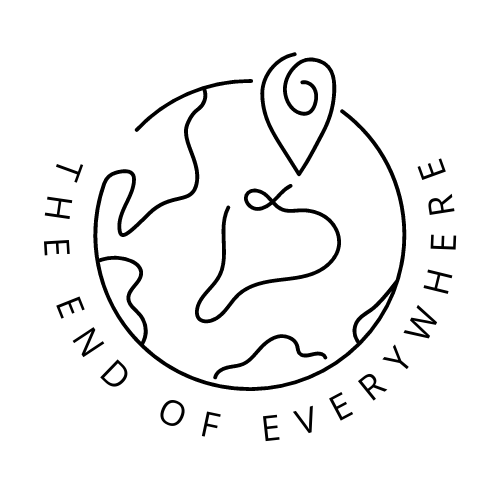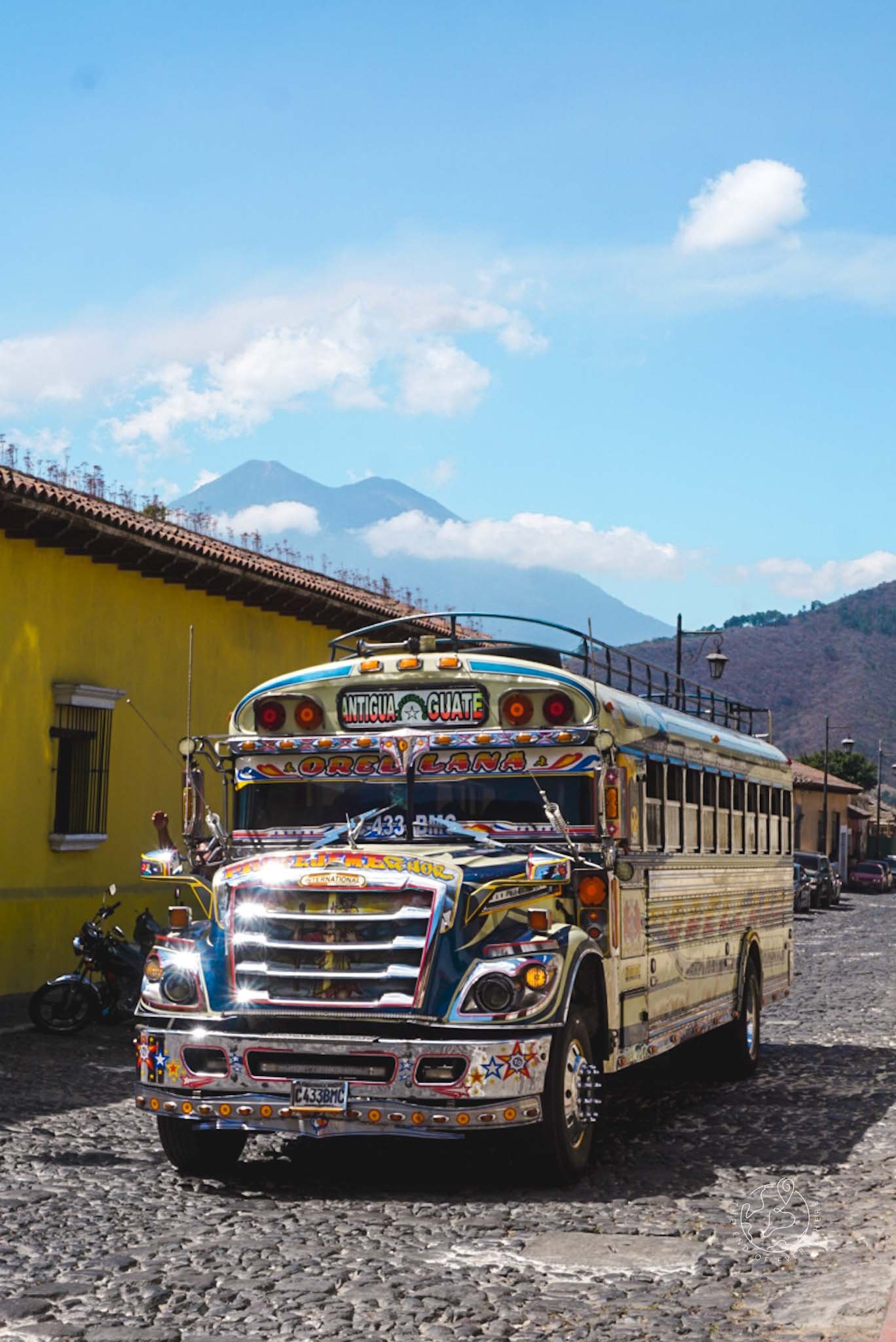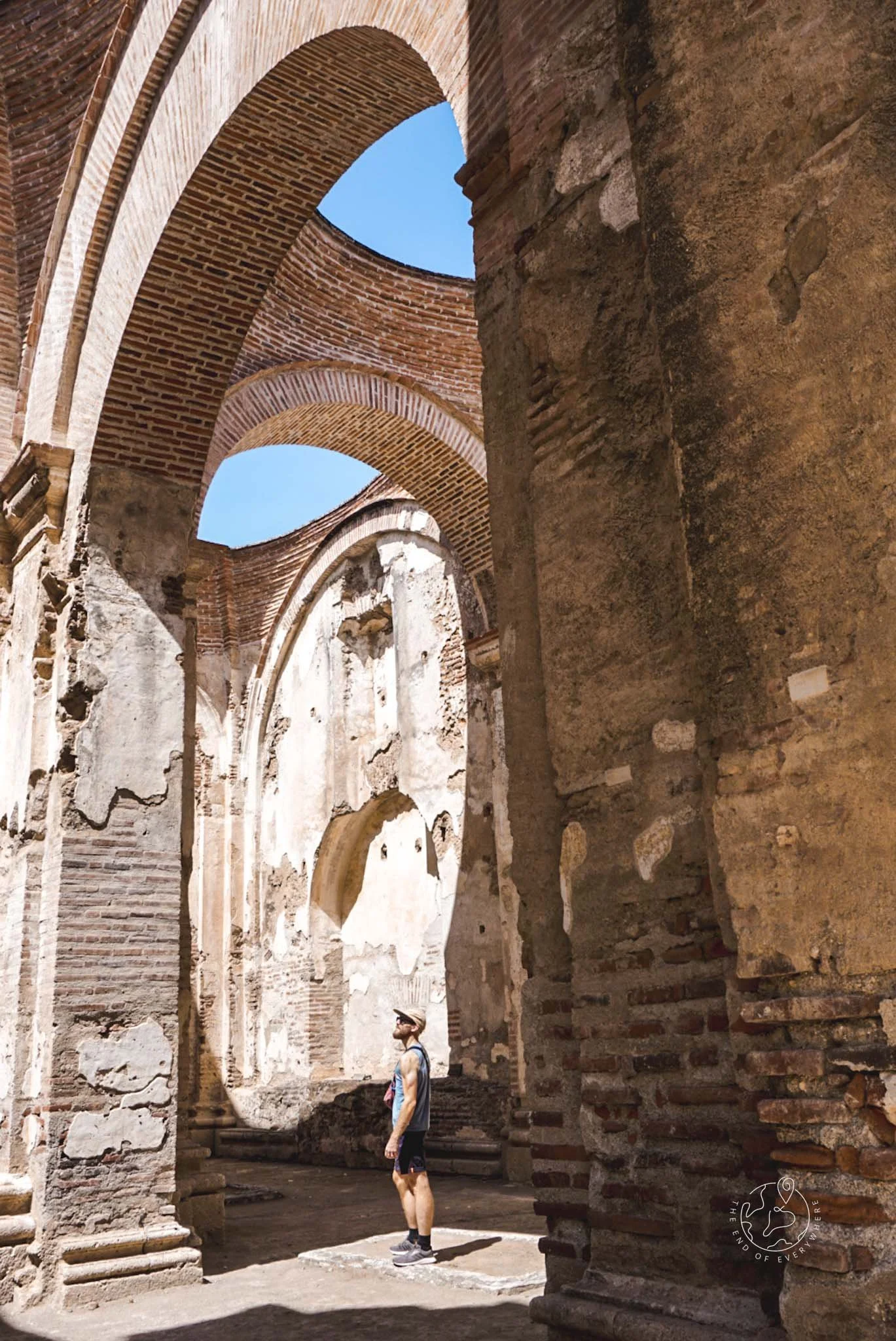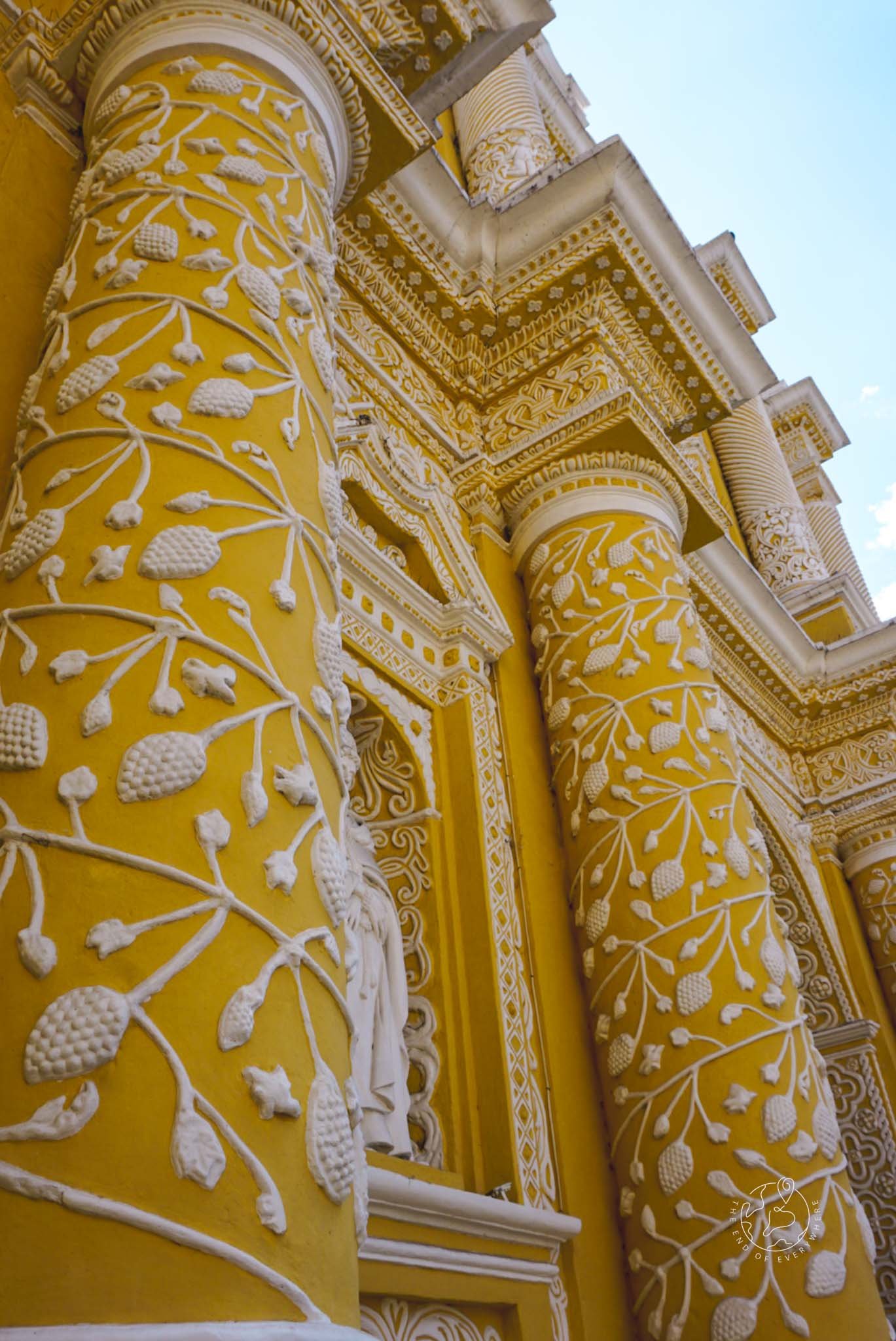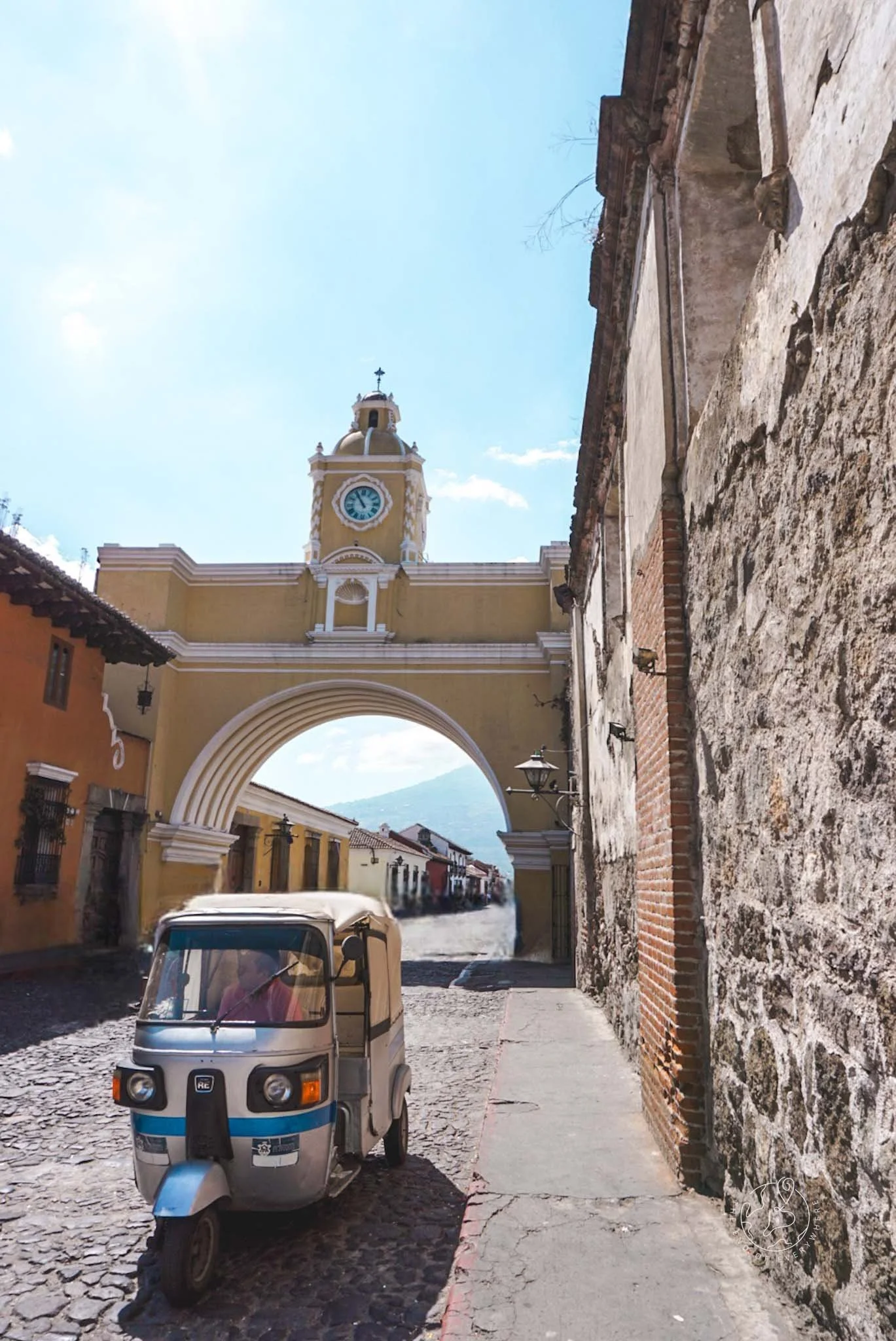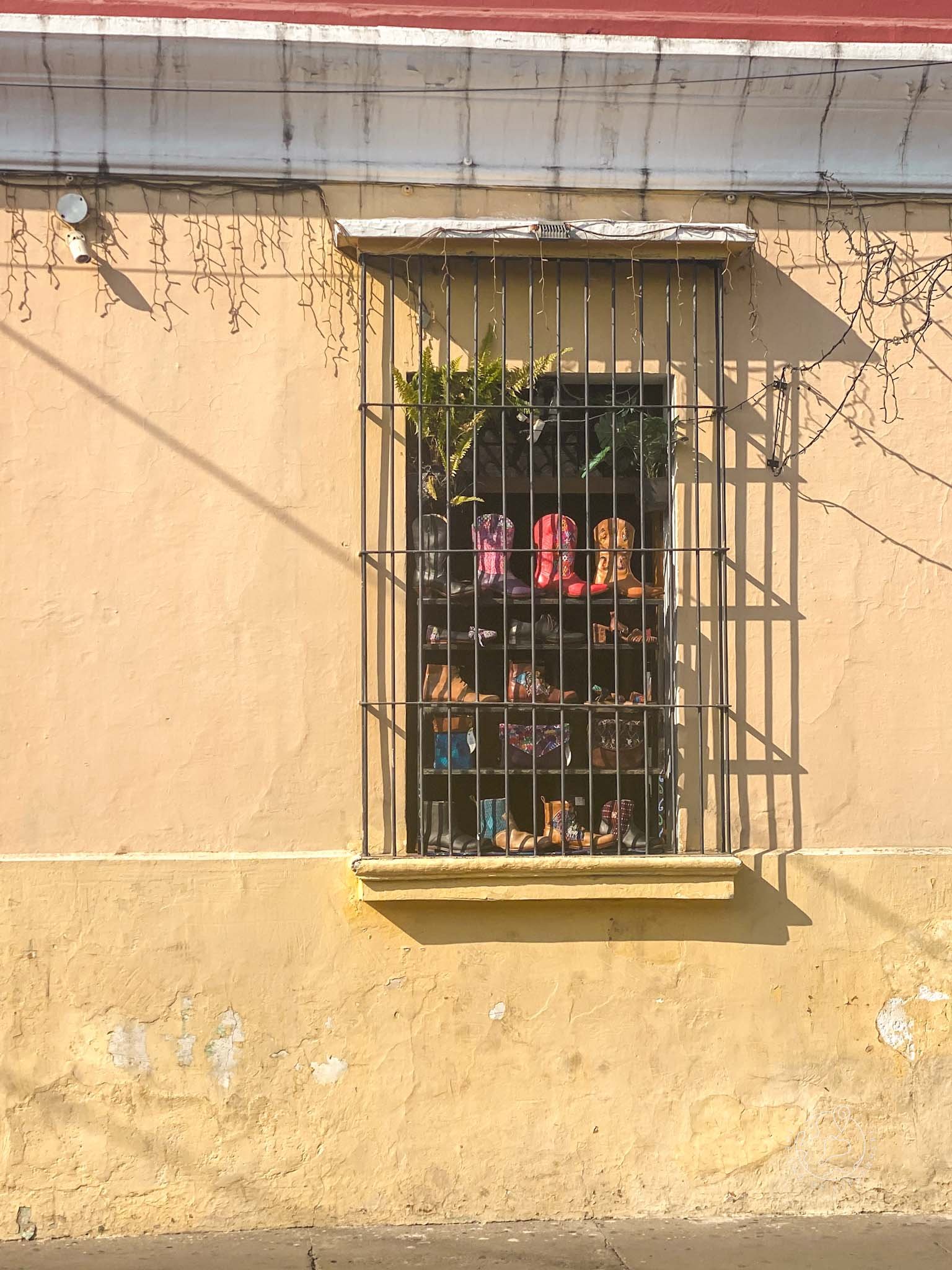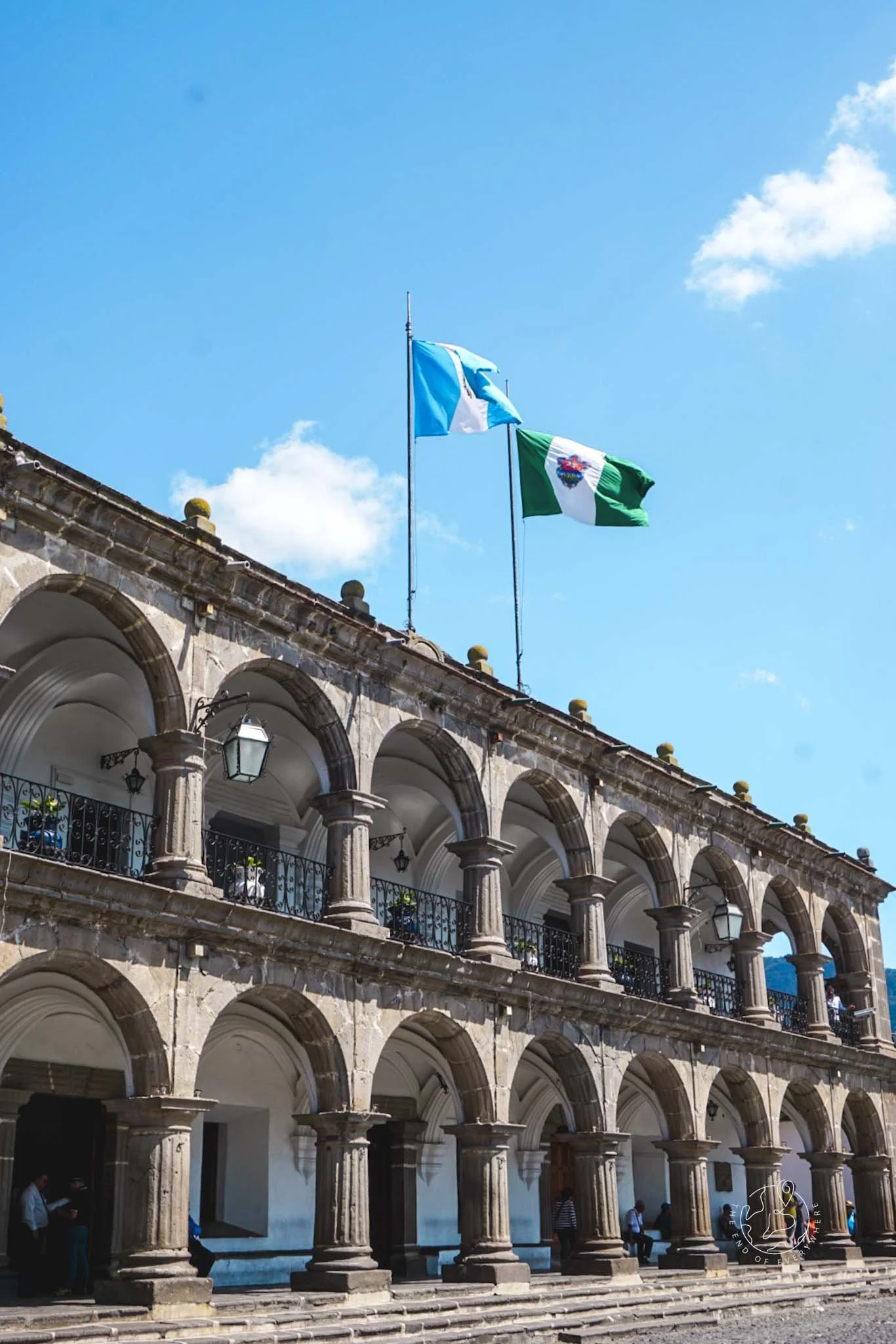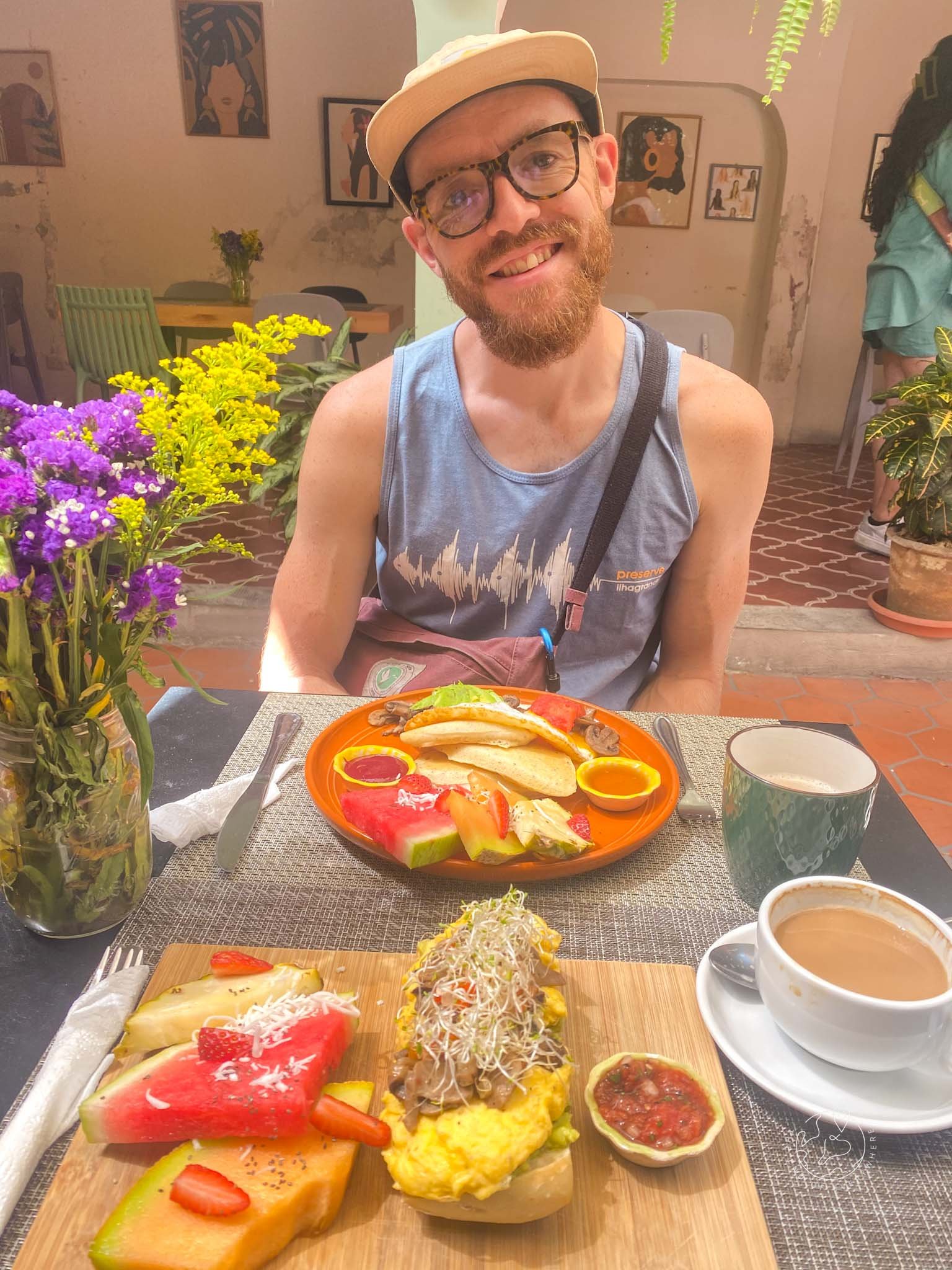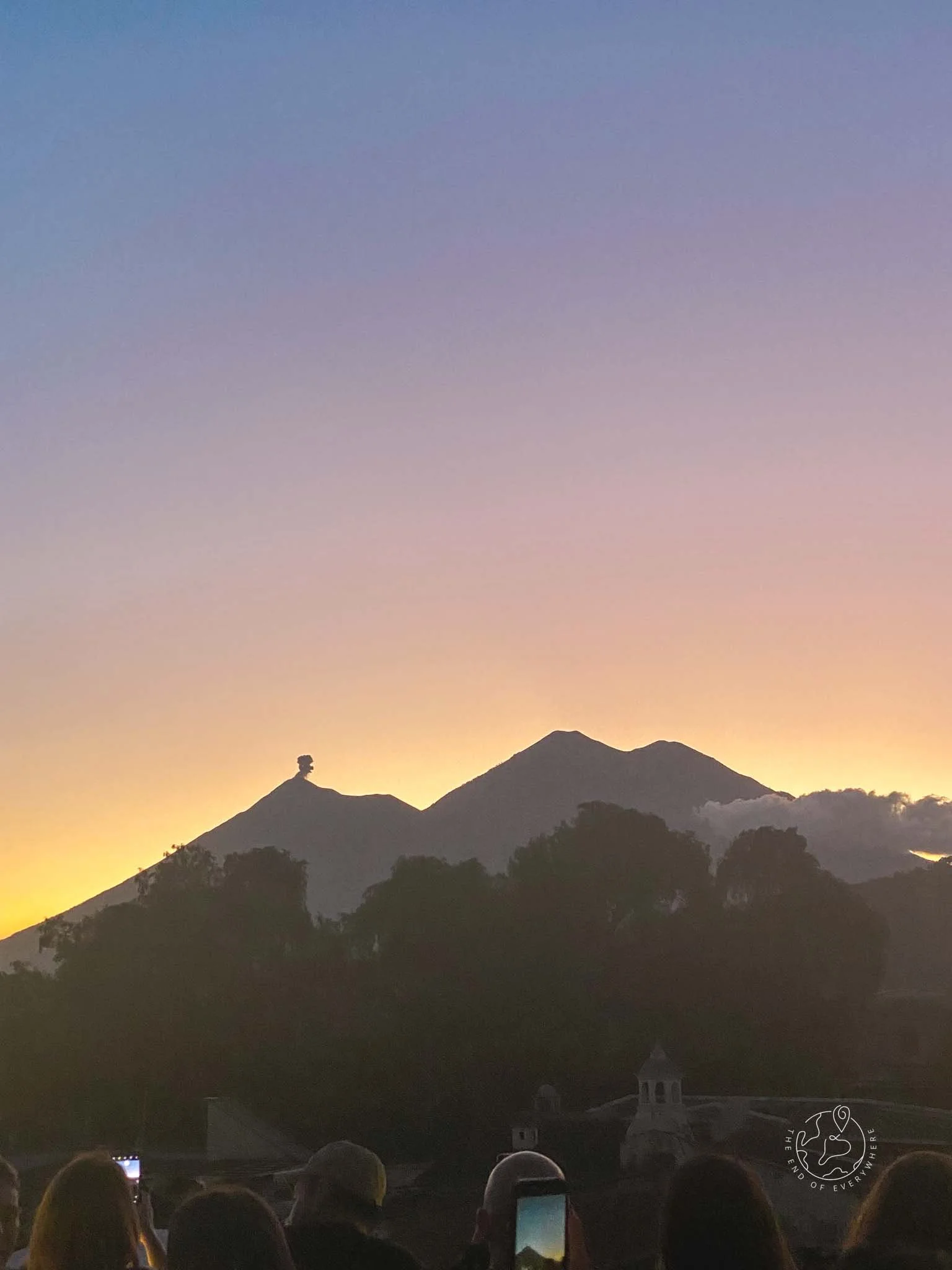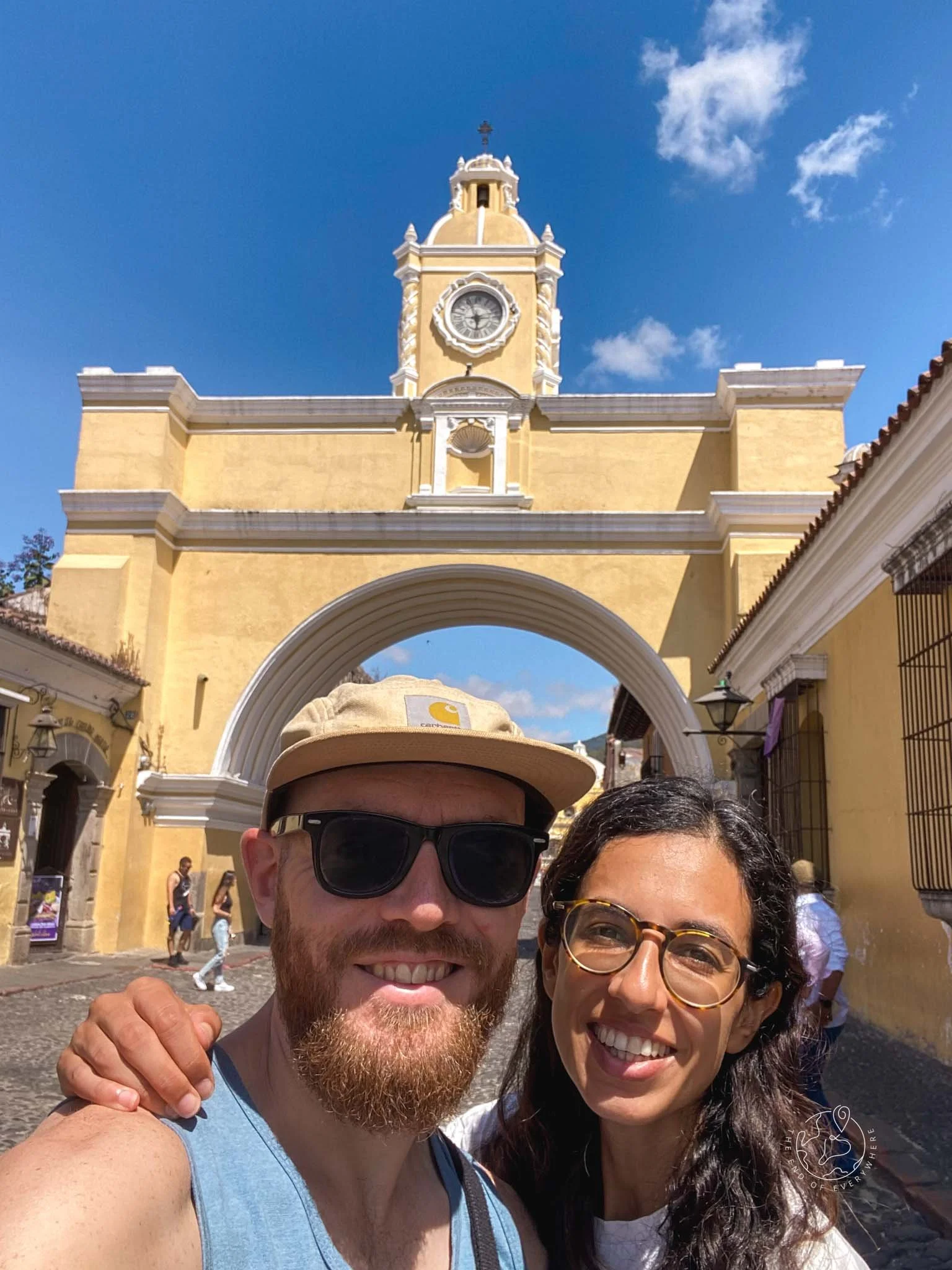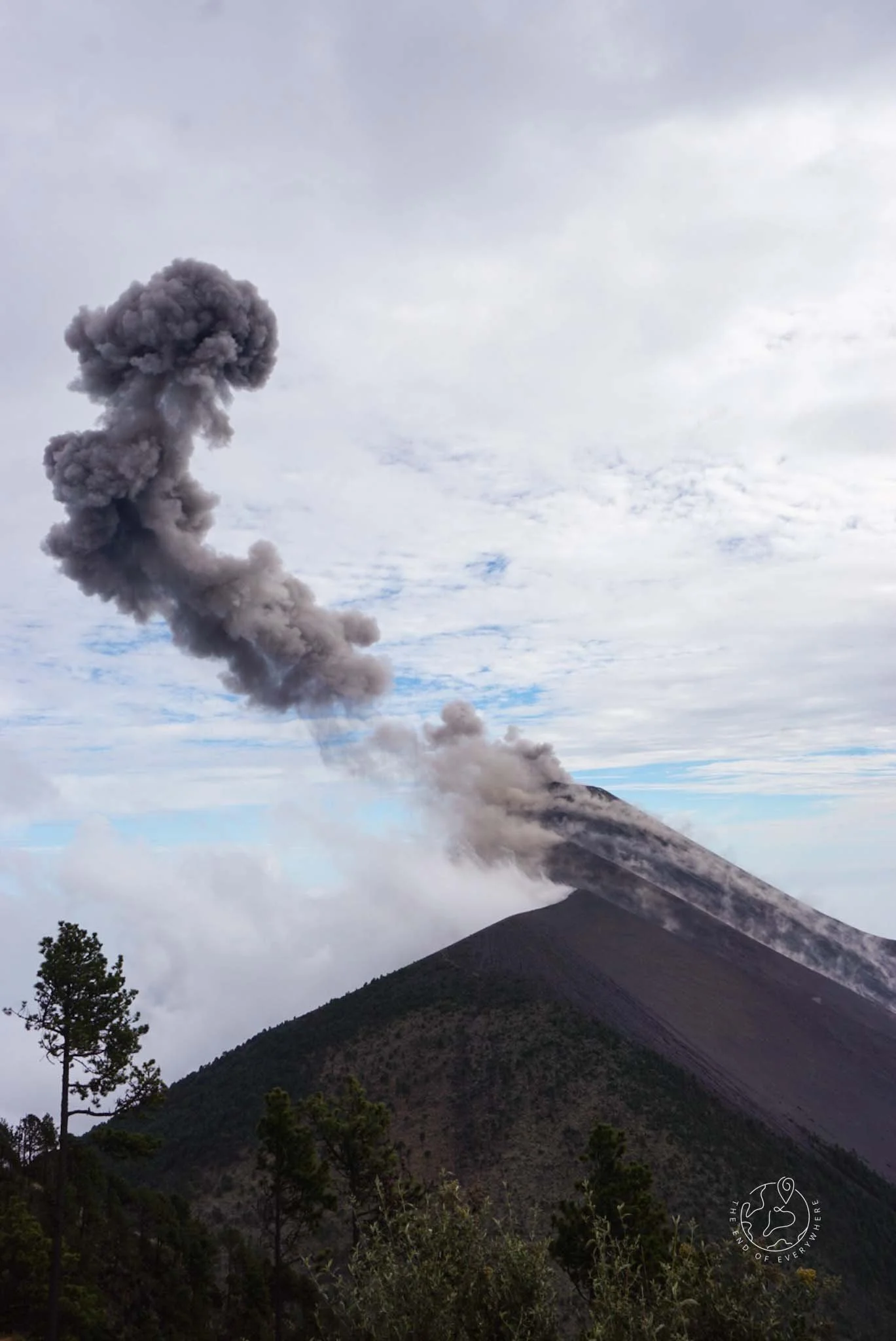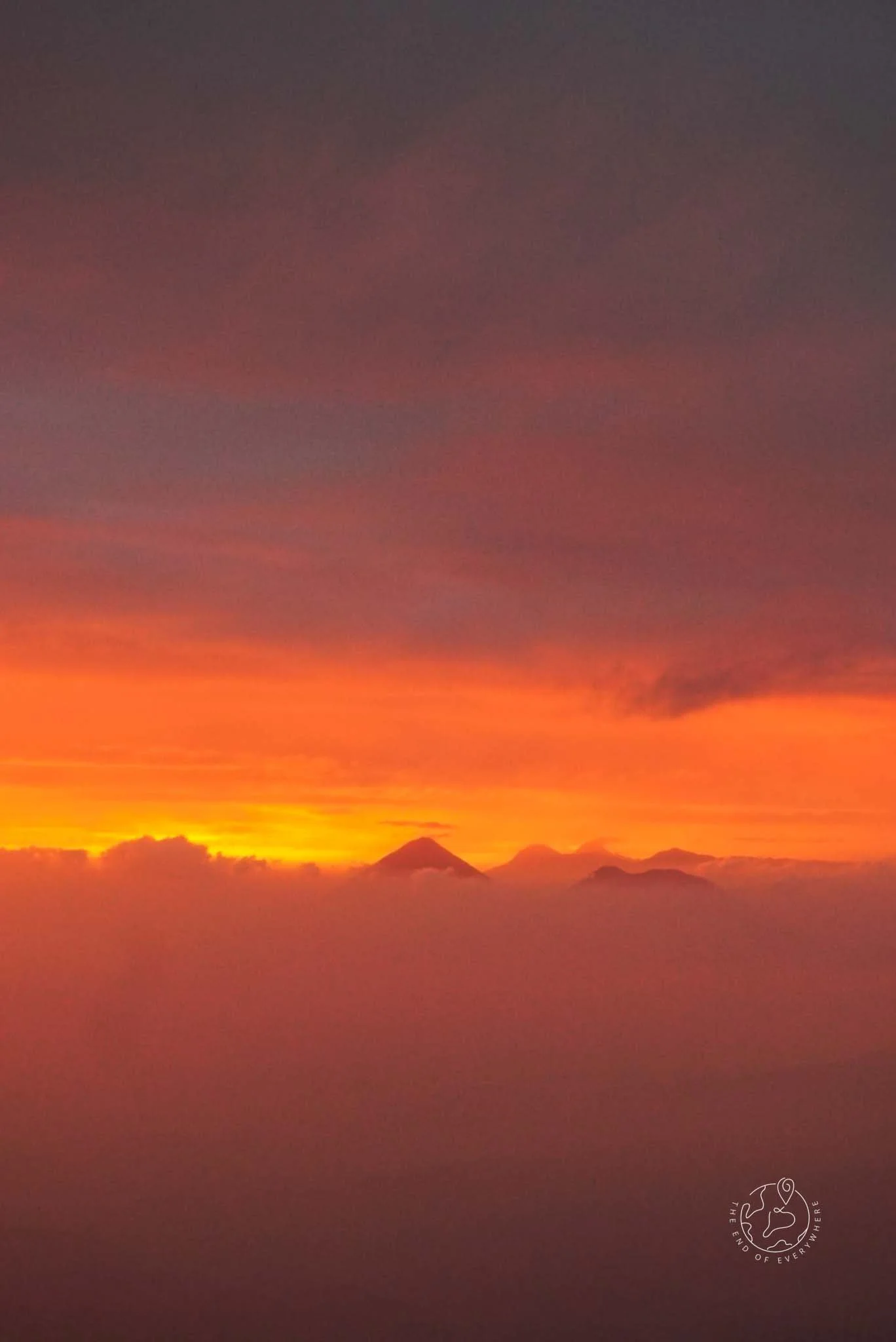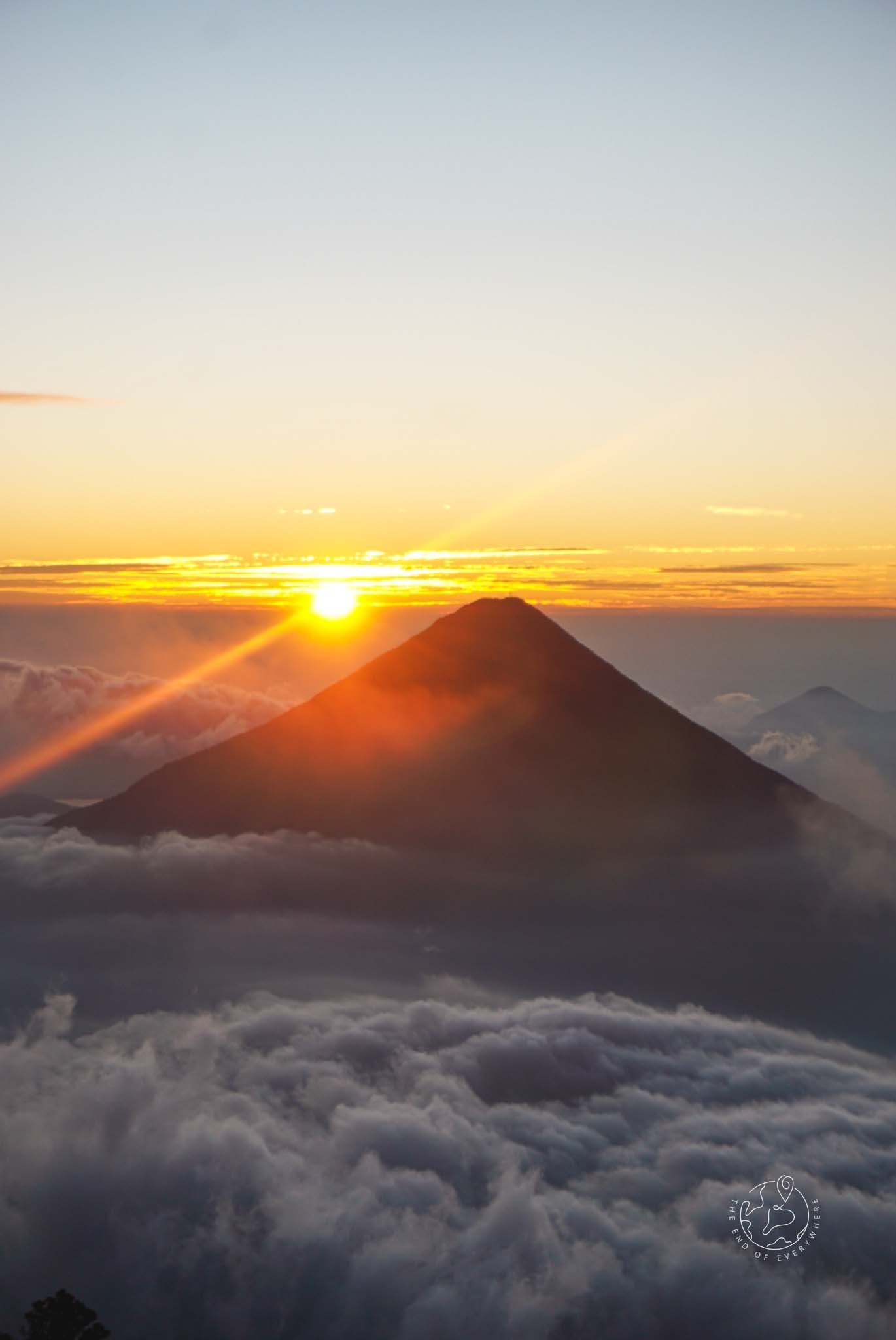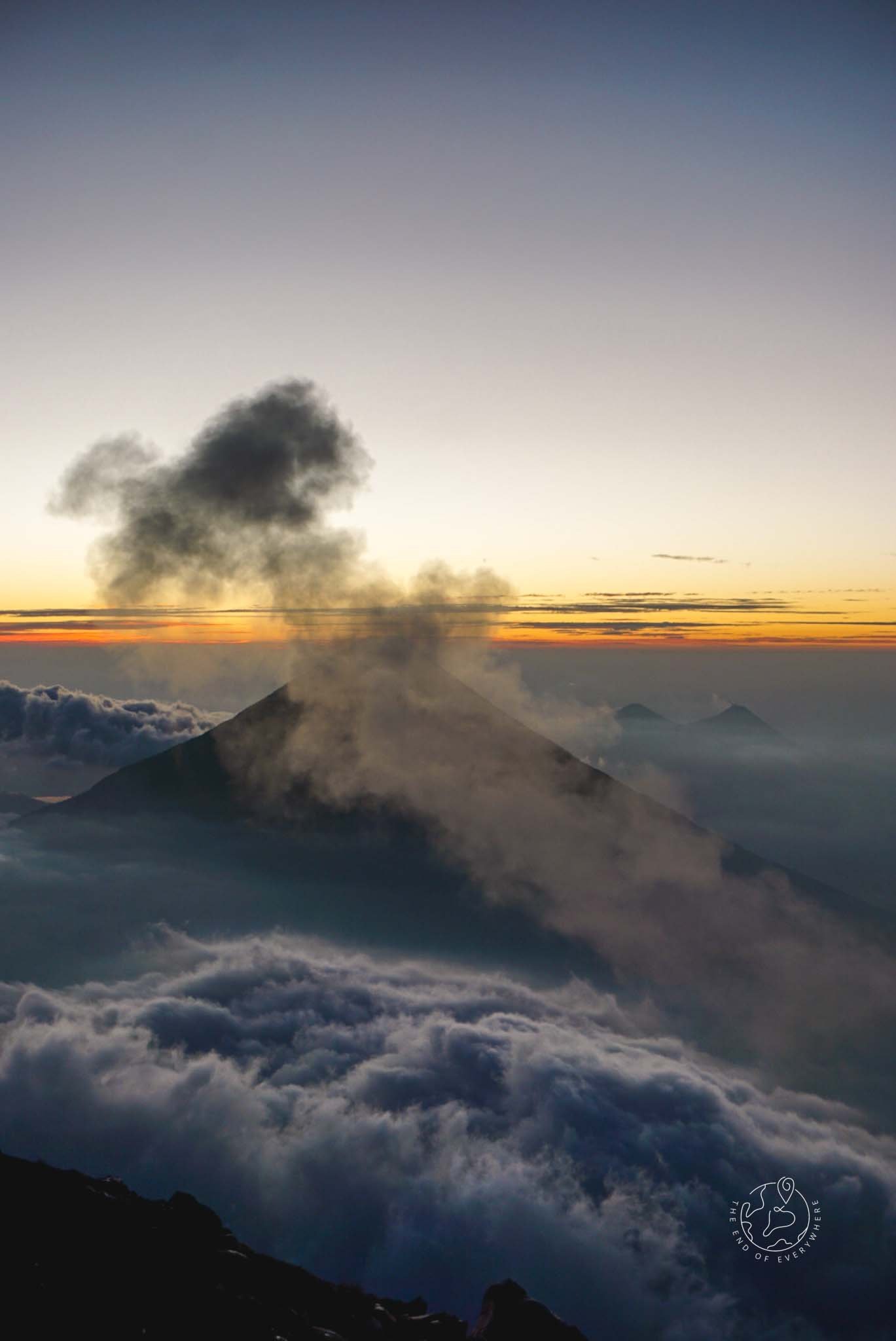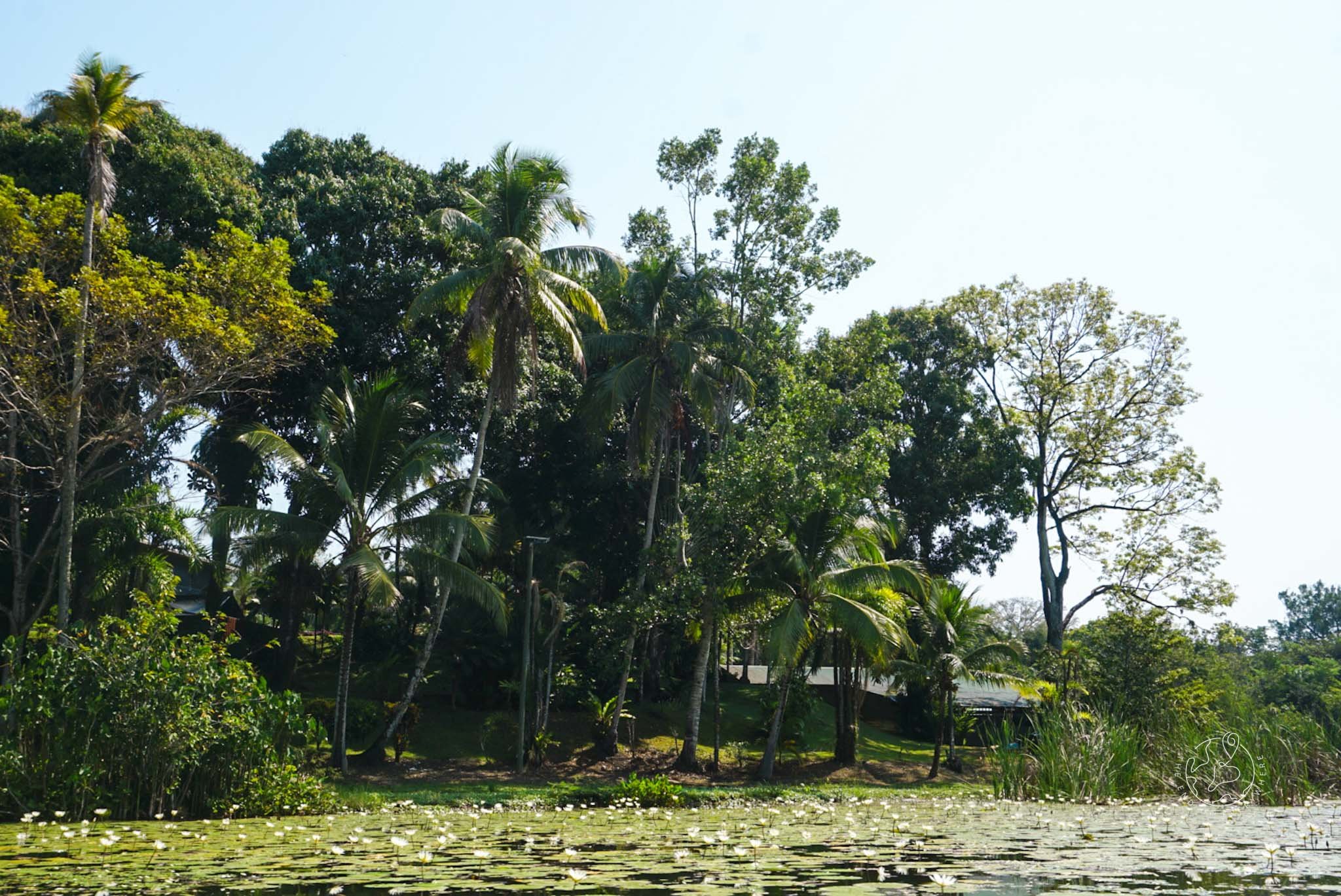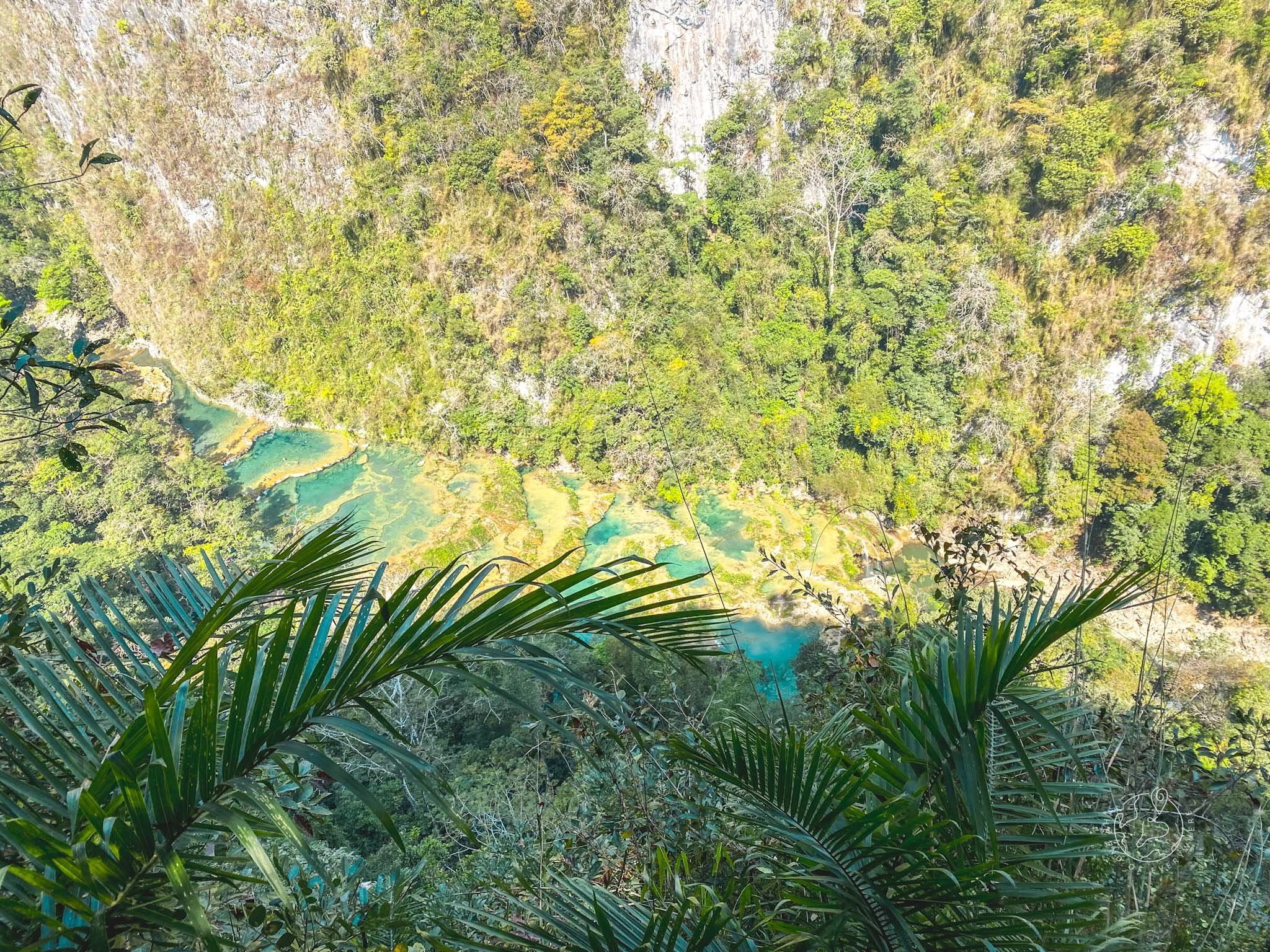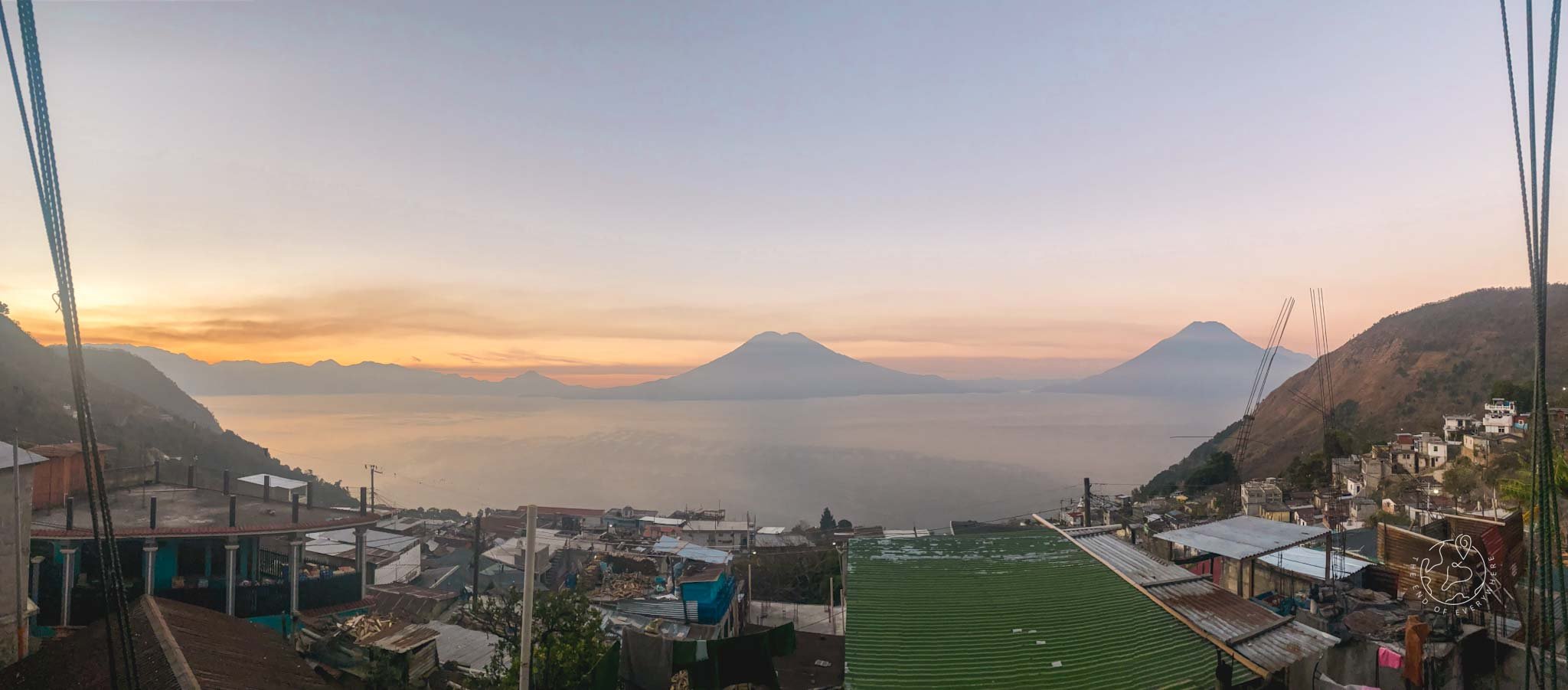Sampling Antigua’s Delights and Scaling Acatenango’s Heights
Watching the sunrise from the summit of Acatenango, with Fuego erupting behind us… a truly unforgettable experience.
I feel like I’ve started most of the Central America blogs telling you it was an epic journey from one place to the next. And spoiler: I’m doing it again.
I think the reason it surprises me every time is because I expected the journeys between places to be much simpler here than in South America. The distances we are covering each time are so much shorter - it makes sense I made that assumption… but I could not have been more wrong.
I’ve already told you all about chicken buses, but here’s the thing: chicken buses don’t run long distances. In all honestly, I’m not sure they would make it. And whilst we had taken them all through Nicaragua and El Salvador, in Guatemala, the intensity of the experience stepped up a notch.
I’m a chicken about chicken buses
Let me paint a picture for you. There are not really any major bus stations, schedules or offices to buy tickets - more like a congregation of buses on one street in the cities, and outside of that it’s dusty intersections of main highways, where a few food stalls pop up to cater to the people waiting on the side of the road for the next passing bus. Ask anyone where to get the bus to X, and they will likely give you the name of a street. Where to wait or what time the bus will show up is anyone’s guess.
The driving style is… concerning. When people warned us about the dangers of chicken buses, I assumed they had meant we could be robbed. I now think they were warning us about the drivers. Speeding up for corners on winding mountain roads, chatting on their phones constantly, blasting a sound system with ribcage-rattling base. It’s best to not think about it.
What else? Your backpack is tied to the roof so quickly you say goodbye to it as you board, fully expecting all of your worldly possessions to be left on the side of the road forevermore. Seatbelts? Nope - cling on. And how much is a ticket? Well, that depends on how much the bus attendant wants to charge you. Paying more than locals seems the norm, although it can be double the price. Hey, I get it. We’re passing through, and locals ride this bus every day - I understand the logic behind paying more… but to leave it up to the whim of some guy to decide how much to charge on any given day? It feels like a rough deal when all we are trying to do is explore their beautiful country.
The one thing you really should expect is for there to be 100% more people on the bus than is advisable - you will be trading sweat with a stranger and, if you’re particularly unlucky, that stranger will be twice your size and half sat on your lap for over an hour.
Graeme says it’s part of the adventure. Personally I can handle it for short amounts of time, but when we are travelling 6+ hours and changing buses four or five times, it’s another matter… I get through by closing my eyes and dreaming about those South American coaches, with phone chargers and reclining seats! This is all a little tongue-in-cheek, because there are pricey door-to-door tourist shuttles between all the destinations we want to visit. But where is the fun in that? It is nice to sample local life, and the fact it takes me outside of my comfort zone is a good thing… but I reserve my right to have a grumble about it! We just always make sure to research or ask locally about the conditions of the roads, and (as you’ll read in a later post, I’m sure), opt for alternative transport where we feel that chicken buses would be unsafe.
Crossing from El Salvador into Guatemala
The above description pretty much covers the highlights of our trip from Juayua, in El Salvador, to Antigua Guatemala. Travelling on a Sunday made us extra cautious as we didn’t know when buses would stop for the day, so we were out of our hostel at 4.30am waiting on a street corner for the bus - which came about 5.10am. Two buses and 2 hours later, we walked across the border to Guatemala, with immigration barely glancing at our passports as they waved us through.
There really wasn’t a lot of information available on how to get to Antigua from the border, so armed with the name of the town where the highways intersected, we headed off in that direction. We were charged double what we were expected to be charged, and were told to get off in the wrong place. Great. After speaking with some locals on the side of the road who assured us the bus to Antigua would pass about 1km down the road, we got into a ‘taxi’ with a little old lady who was also heading that way (it wasn’t a taxi, but a nice local man who gave us a ride for about £2). There, we boarded the fourth bus of the day and were safely in Antigua by lunch time.
Now, I said we left early because we weren’t sure how late the buses would run on a Sunday. This is only partly true. The truth is, Graeme wanted to be parked in a sports bar by 5pm to watch the Super Bowl. He was still in a lot of pain with his tooth, and I thought I could just about drag myself out of bed at 4am to make him happy - if that’s not love, what is?
Living our best brunch lives in Antigua
Of course our first port of call in Antigua was the dentist (sorry to have left you all on a cliffhanger about that one). Turns out, his teeth were fine. Just a small gum infection that had almost cleared on its own. He’s very smug about reaching the age of 36 without having any fillings! £90 down, we set out to explore Antigua.
Once the capital of the country, Antigua has a rich history dating back to its founding by Spanish conquistadors in 1543. Being the religious, political and financial centre of the country meant that beautiful buildings and churches were erected, but the city’s prosperity was interrupted by a series of devastating earthquakes - the worst of which hit in 1773, resulting in the capital being moved to Guatemala City.
You can see evidence both of the prosperity and the devastation as you walk around the cobbled streets of the historic centre. It really is a beautiful place. Some of our favourite stops were the ruins of the old cathedral, half torn down by earthquakes, and the elaborate Iglesia de la Mercred - a baroque-style church with an unmissable vibrant yellow facade.
We spend our first few days marvelling at the architecture, visiting the city’s museums and galleries and living our best brunch lives. The city is quite an international traveller centre, so there were a huge variety of options when it came to dining - we even managed a cute Valentine’s Day dinner.
In the evening we would make the most of the rooftop bars and watch the sun set dramatically behind the volcanoes that ring the city, eyeing up our next big challenge: climbing Acatenango volcano.
(click to make the photos bigger!)
Climbing two volcanoes in 24 hours: Acatenango and Fuego
We got our first glimpse of erupting Fuego from the chicken bus into the city. Or at least, I did… Graeme couldn’t see it. But the twin peaks of Acatenango and Fuego can be seen across Antigua, plumes of smoke rising from the active core of Fuego. After spending a week in their shadow, it was finally time to get up close and personal.
At this point a sensible person might ask: why on earth would you climb an erupting volcano. I’m afraid to say I’m not quite sure. I guess there are two types of people in the world - those who look at it and think, “no, thankyou,” and those who put on their hiking boots and kill themselves to get up there.
Acatenango stands at around 4,000 metres above sea level - the third highest peak in Guatemala. It is a popular hike from Antigua not only for the beautiful views from the summit, but because it gives hikers the opportunity to get close to neighbouring Fuego - one of the most consistently active volcanoes in Central America, which erupts ash and lava every 15-30 minutes.
The weather forecast for our hike didn’t look great - of course it didn’t. In a week of clear blue sky days, we were hiking on the only day where rain was expected. We set off with a group of about 30 others, leaving Antigua at 8.30am and beginning our hike at around 11am. We were told it would take six hours to get to our camp at 3700m - a gruelling ascent of 1600m from the trailhead.
I won’t lie: it was hard. We’ve hiked at a much higher altitude in South America, but we’ve always been really careful about properly acclimatising - something that just wasn’t possible here. We stopped for breaks quite often and admired the views all around - the rain that was threatened didnt spoil our ascent to camp; insead, misty clouds on the horizon made the views across to Lake Atitlan look like a spectacular watercolour painting.
It was pretty hard to catch my breath, my heart was beating out my chest and my legs felt heavier and heavier with every step - not helped by the 4 litres of water plus overnight equipment I was carrying on my back. But we not only made it to camp - we did it in under 5 hours!
Rounding the corner on the trail for our first view of Fuego just as smoke was billowing from the crater… it was one of the most incredible sights we have ever seen.
After a pot noodle snack to warm up, we were given the option of getting closer to Fuego. After a hard 5 hours hiking, this would be signing up for another 4 hours - descending some of the way down Acatenango just to climb again, taking us to within 500m of the lava flow. It sounded like madness on all counts, but we had come this far… we had to do it!
Honestly, one of the worst decisions I have ever made! The hike to the slopes of Fuego was manageable, and we saw the most vivid sunset of red and orange all around, but once we were there… remember that rain that was forecast? That’s when it came. Cloud billowed over us, a freezing cross-wind threatened to knock us off our feet and driving rain made it impossible to see. We stood there, no one having much fun, for about 30 minutes, in which time we saw a few very small eruptions from Fuego. When the cloud got thicker and obscured the crater, we turned back.
Here’s where it got worse. We now had about 2 hours return journey, down the ashy slopes of Fuego and back up rocky Acatenango to our camp, all in the pitch dark. It was hell. Of course, as we closed in on camp the rain clouds cleared and we saw an almighty Fuego eruption. It was amazing to see, but seriously?! Could it not have come an hour earlier? Mother Nature is an unpredictable lady!
We wolfed down our dinner and collapsed into bed for what felt like 10 minutes, because our alarms went off at 4.20am. This time, we had our sights set on the final 250m to the summit of Acatenango.
When we first woke up I was going to opt out of the hike. It was still cloudy and I couldn’t handle the disappointment of hiking up there and seeing nothing. But as I umm-ed and aaa-ed about whether to go or not, the stars started peeking through. I remembered how quickly the clouds had cleared the previous night and resolved to go - when else would l get a chance like this?
So once again I was scrambling up rocks in the dark, turning in awe every time we heard the explosive Fuego putting on a show behind us. This time, you’ll be pleased to know, the effort was worth it. We saw a spectacular sunrise from the summit of a volcano, whilst watching another volcano erupt. What a crazy sentence to say.
The rest of the morning was a blur of running / sliding / falling down the volcano - in under 2 hours! - and having the world’s longest shower in an attempt to wash ash from every corner of my being.
After a quick nap, we met up with our group for some well-earned and much-needed drinks, toasting our quite frankly insane achievement.
Was it worth the whole body pain of the next few days, and the ash that seemed to resurface under my nails for weeks? Absolutely. Climbing Acatenango is not just a highlight of this trip, but one of the best things we have ever done… a truly challenging but unforgettable experience. What a way to welcome us, Guatemala!
Related Content
